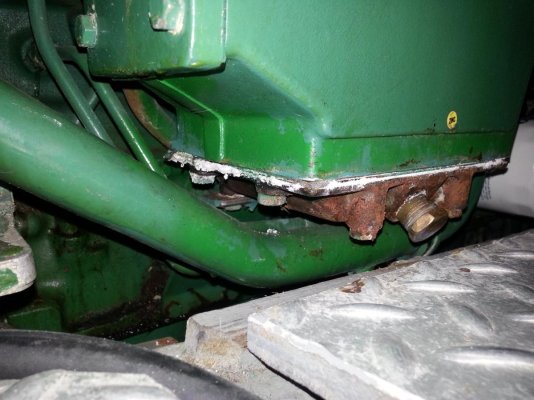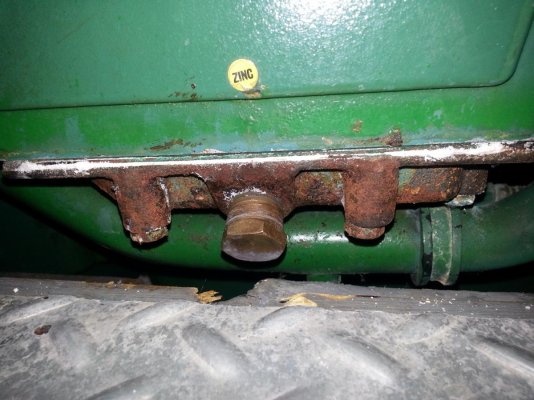Is it because the anode, being embedded in the cap, and perhaps no electrical connection between the cap and the cooling jacket, is why only the cap is deteriorating?
-------------------------------------------------------------------
No, water travels down. That's why the lid and not the upper part is rusted. If the assembly were upside down what is now the upper part would have the trouble.
Once paint has been breached water/rust will penetrate further and further. I have seen rust runners travel a long ways under otherwise solid looking paint. The rust was not YET bad enough to bubble the paint.
Be carefull when trying to remove the cover as the bolts may be rusting and be difficult to remove. A broken bolt will be trouble. Try it, wiggle back and forth often to beak up the grip, soak with penetrating fluid. Upside down won't be easy but some cotton batting taped into place should hold a reservoir.
Most likely GASTON, Post #2 nailed it. This has been going on a long time for that level of salt residue and rust. You may not see it but not only salt residue but actual water has been coming through. Not much water but enough with the salt to rust the part and knock off the paint.
The zinc WILL NOT help or hinder that external corrosion. It is meant to protect the internal parts where the actual zinc is immersed in water.
As suggested remove it, BLAST it and repaint. I agree about the Por15.
But even so if the water continues to escape the rust will eventually return.
Take care with the gasket. I have seen gaskets that were sealed well initially take a set over a period of time and then seep. The set allows bolt sealing/clamping tension to be lost Snug the screws again. Use some Nev R Seez or similar on the screws so they don't rust/corrode into place in the future..



